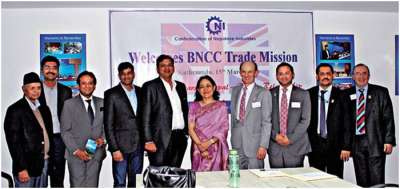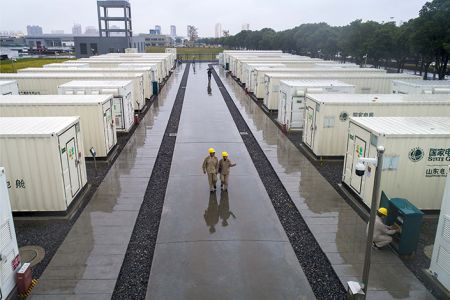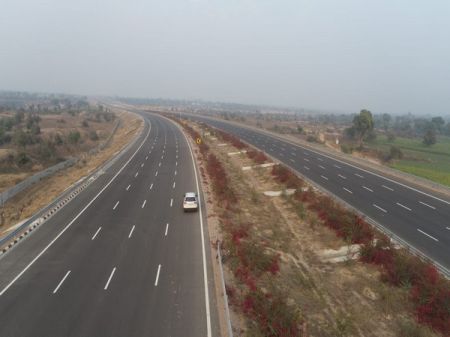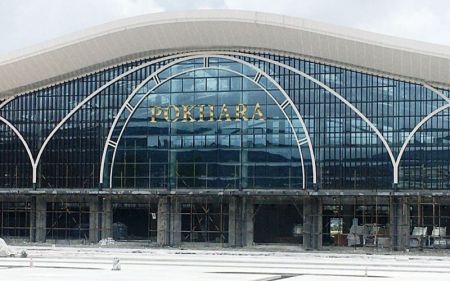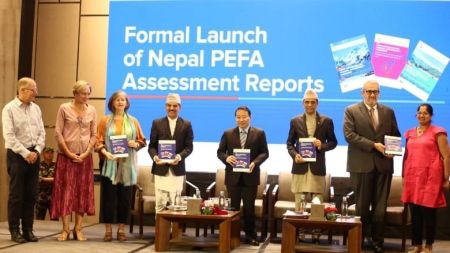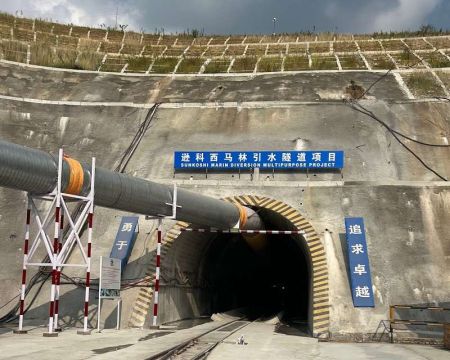--By TC Correspondent
South Asian economic giant India is considering the establishment of a South Asian development bank that will fund infrastructure projects and promote trade in the region, according to reports in the Indian press.
Indian Commerce Department has written to the finance ministry in support of such a lender, which it sees playing a critical role in facilitating trade among the eight members of South Asian Association for Regional Cooperation (SAARC) countries, Indian media quoted a source at the department. “The final call lies with the ministry of finance and partner countries.”
Commenting on the development, Nepal’s Consul General in Kolkata Chandra Prasad Ghimire said, India has clearly shown its interest in regional trade. “India seems to be interested to invest in hydropower projects and expand its market throughout the SAARC region,” he said. The idea of a regional bank may have come to materialize the Indian wish to expand its investment throughout the region, he opined.
Starting a regional bank is good news per se, he said, adding, “But the challenges for a small and land-locked country like Nepal are how to take maximum advantage from such regional lending arm.”
SAARC countries are signatories to the South Asian Free Trade Area (SAFTA) agreement on goods that came into force on January 1, 2006. A regional financial entity may help materialize SAFTA in effective manner as such entity helps facilitate cross-border transport, Ghimire further said.
SAFTA required the developing countries -- India, Pakistan and Sri Lanka -- to lower customs duties down to 20% in the first phase of the two-year period ending in 2007 and to zero by 2016 in phases.
Currently, the SAARC countries are negotiating to address non-tariff barriers and implement trade-facilitation measures that include the easing of customs procedures. Experts say investment from single financial institution in the region will help in trade-facilitation.
“Most of the non-tariff barriers are related to infrastructure deficiency which needs money. So trade facilitation is actually a question of finding money. That is what the South Asia Development Bank will facilitate,” Indian media quoted Department of Commerce official as saying.
The commerce department has suggested that the bank could be set up with whatever the partner countries agree to put in as equity.
SAARC comprises Nepal, Bangladesh, Bhutan, India, Maldives, Sri Lanka, Pakistan and Afghanistan.
Cynical views
Many experts, however, see the proposal as the Indian attempt to expand its hegemony at the regional level. The proposal can be seen as an attempt to overshadowed Asian Development Bank in which the traditional domination of Japan can be seen, an economist told The Corporate. India wants to weaken the presence of the World Bank and Asian Development Bank in the region by establishing a regional lending agency with its own domination, he opined. Despite positive aspect, the proposal should be studies carefully by all SAARC countries, he said. It will be backfiring for all SAARC countries if India utilizes the lending agency just as a means of expanding its market in the region, he further said. India is also active in forming development bank with $100 billion in the BRICS nations. BRICS nations have decided to initiate a new lending arm which, as many believe, is set to rival the dominance of the World Bank and the IMF over BRICS bloc.
Possible benefits for Nepal
1. Facilitation in cross-border transport
2. Development of regional transmission line for hydropower projects
3. Construction of big hydropower projects in Joint Venture
4. Trade facilitation
5. Address the bottlenecks in non-tariff barriers
6. Possibility of South Asian regional road network
7. Chances for direct trade with Bangladesh and Pakistan and other SAARC countries
Challenges Ahead
1. Preserving rights of small economy
2. Collect equity to inject in the bank
3. Domination of regional giants
4. Chances of export may suffer the problem of low productivity at the national level
5. Businessmen at the national level may face severe competition from their regional counterparts
6. Nepal might only be consumption market
7. Nepali may get only blue colour jobs due to domination of richer nation in high posts



